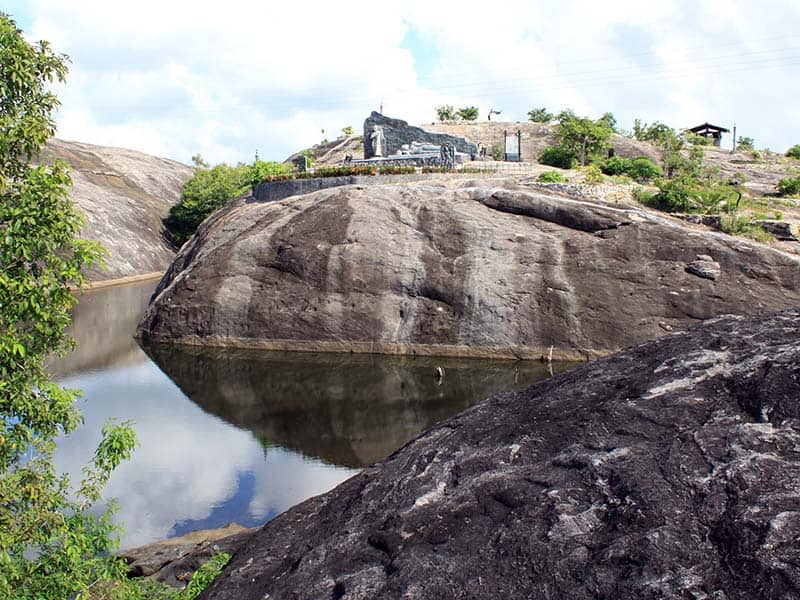Nestled within the thick forests of Ampara District, closer to Arugam Bay, is the rather unknown temple complex of Buddhangala Monastery, built on an outcrop of five larger rocks, covering at least 1280 acres. It is among the least-known historical sites in Sri Lanka. The monastic complex has been dated back to the 4th Century BC.
In those days it was part of a provincial principality known as Digamadulla.
It is still a monastery to forest monks of the time and there has been some renovation, especially concerning the bell-shaped main stupa. In fact, it has been renovated numerous times since its founding, including once by the overzealous Saddhatissa of Anuradhapura. In the 12th Century AD, it was destroyed by the pillaging armies of Kalinga Magha who took down Polonnaruwa and leftover as a forgotten memory to be consumed whole by the jungle. Finally, it was rediscovered in 1964 by an intrepid young monk. Finally, exploration could begin again and the Buddhangala Monastery c complex could be revealed to the world once more.
However, in a much darker turn, the Buddhangala monastery was also used as a base by radical groups in 2009. This structure was built during the time before Sri Lanka was a united kingdom and small regional governments and principalities existed instead, most of them surrounded by thick forest and natural rock fortresses. Thus it was constructed before the Buddhist era in the island, or at least about a century or so before it became the national religion. If anything, all we can admit to is, that Buddhism was known by the people of the country but it did not have royal patronage just yet. Thus while the king of the province was apparently a Prince Dhigayu-as mentioned in the great chronicle-there is not much known about it. This is, except for the fact that his wife Princess Chitra was responsible for its construction and that the Buddha’s chief disciples have their relics enshrined here. As for the history of these two characters, Chitra was the mother of Pandukabhaya himself, the first king of Anuradhapura, and essentially the hero of the pre-Buddhist era.
The Mahavamsa is always to be taken with a great deal of salt concerning historical details, especially concerning the early history of the country. For one, it is difficult to know how exactly the relics of Venerable Sariputta and Moggallana got to Sri Lanka, but one can surmise that a private individual such as a North Indian merchant might have brought them here. In any case, it is protected now by the twelve monks who actually live here, continuing their traditional and pious lives in poverty, meditation, and isolation despite the hardships of their wild world.
Written by Vasika Udurawane for Travel Lanka Compass



0 Comment